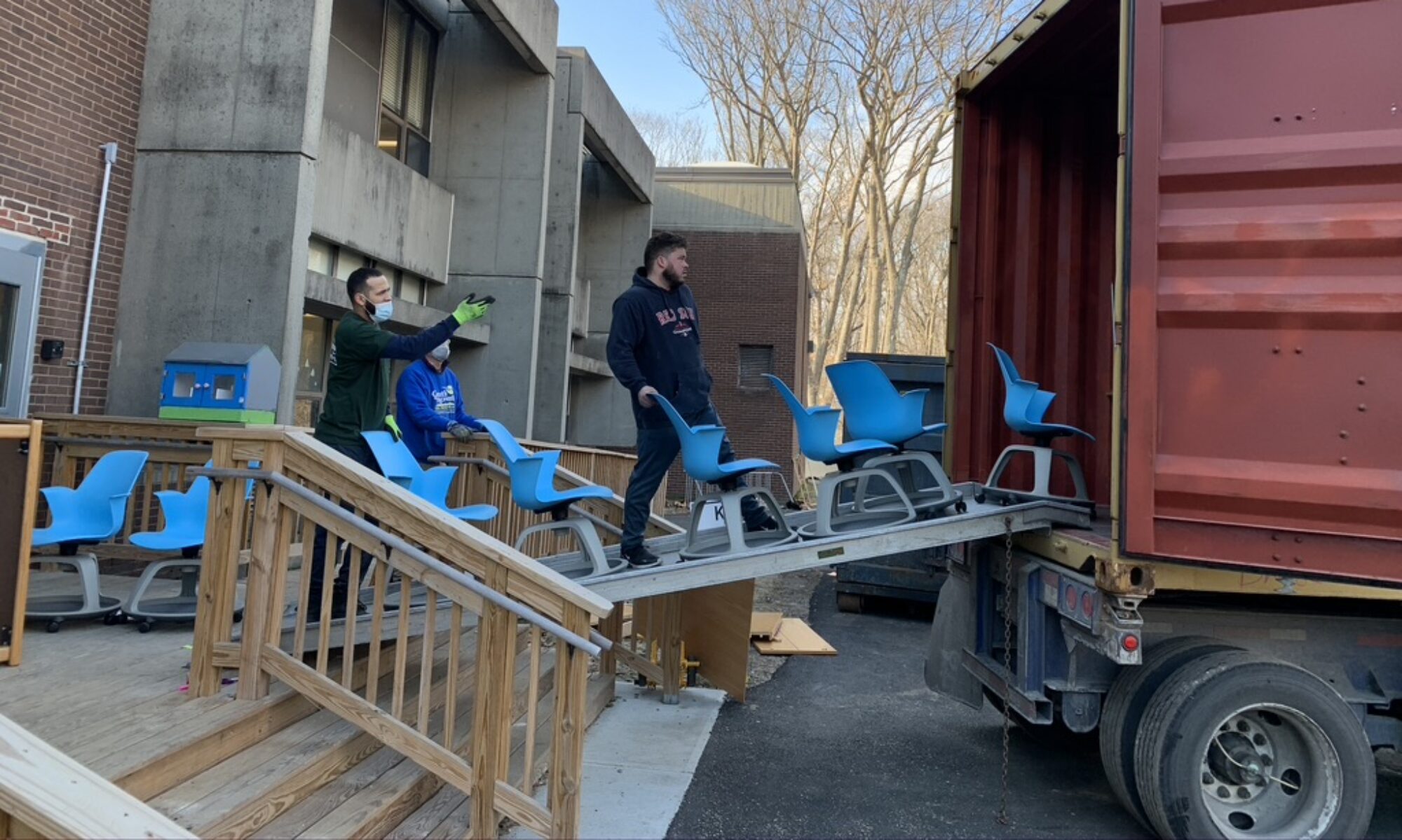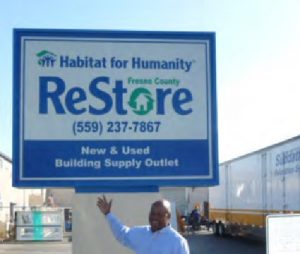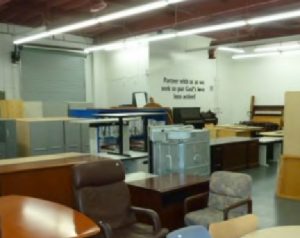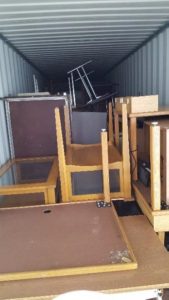 Situation
Situation
Renovating its main campus library, Wentworth Institute of Technology (WIT) had nearly 600 pieces of library furniture to dispose of. There were no ready buyers. And WIT needed the library cleaned out quickly and efficiently to meet its construction schedule. So an as-is-where-is tag sale or piecemeal donation to community organizations wasn’t an option, either. But with a strong commitment to sustainability, WIT wanted a better outcome than throwing good furniture into the dumpster.
Wentworth’s Construction Manager, STV (formerly Diversified Project Management), asked campus mover ABC Moving if they could offer a better solution. ABC is a longstanding IRN business partner, and picked up the phone.
Planning and Implementation
IRN quickly identified a recipient for WIT’s furniture: Food For The Poor, another longtime IRN partner. FFP accepted the furniture for delivery to its central warehouse in Jamaica, for distribution to FFP relief and development projects there and elsewhere in the Caribbean Basin.
The biggest challenge on the project was Wentworth’s urban campus. IRN overseas shipments are loaded directly into shipping containers, sealed, and then transported directly by truck and ship to their final destination, where they are unlocked and distributed. But there was no room on Wentworth’s campus to park a 65-foot long tractor-trailer.
IRN and ABC’s solution was to shuttle the furnishings in ABC box trucks to ABC’s warehouse, five miles from Wentworth’s campus. There the furnishings were off-loaded and cross-docked into IRN shipping containers. The furnishings were removed from the Wentworth library one day, and packed and shipped in three overseas containers the next, so there was minimal tie-up of ABC’s warehouse space.
Composition
Cost
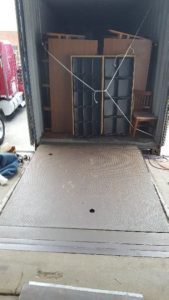 At regional landfill rates, Wentworth would have paid about $8,500 to dispose of these furnishings as trash. The cost of reuse through IRN was more than 30% less. There was added cost to shuttle the furniture to ABC’s warehouse, but this was offset by savings in efficiency, because ABC’s movers could work at their own pace, without delays caused by the need to wait for delivery and switch out a dozen or more rolloff containers.
At regional landfill rates, Wentworth would have paid about $8,500 to dispose of these furnishings as trash. The cost of reuse through IRN was more than 30% less. There was added cost to shuttle the furniture to ABC’s warehouse, but this was offset by savings in efficiency, because ABC’s movers could work at their own pace, without delays caused by the need to wait for delivery and switch out a dozen or more rolloff containers.
The Triple Bottom Line of Reuse
Reuse Saves Money. Wentworth’s savings are typical. Savings vary in different parts of the country, depending on regional disposal costs. But one thing is true nationwide: reuse through IRN will cost less than throwing surplus furniture away.
Reuse Benefits Society. Wentworth’s furnishings are now helping desperately needy children along the single most promising path to escape a life of poverty: a solid education.
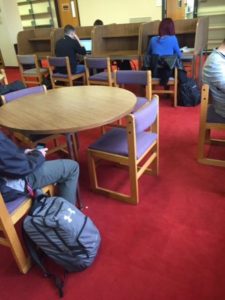 Reuse Benefits the Environment. In this single two-day project, Wentworth diverted 30,000 pounds of bulky material from disposal. In 2016 IRN projects kept more than 7.5 million pounds out of U.S. landfills.
Reuse Benefits the Environment. In this single two-day project, Wentworth diverted 30,000 pounds of bulky material from disposal. In 2016 IRN projects kept more than 7.5 million pounds out of U.S. landfills.
And there’s a fourth. Repurposing U.S. castoffs to benefit our common global community — reuse is just a great story.
Click here for a PDF of this story.
For more information about IRN, how we work, and the Triple Bottom Line benefits of reuse, send us your contact information below and we’ll get in touch. You’ll find we’re not salespeople; we just love what we do.
[contact-form][contact-field label=Name type=’name’ required=’1’/][contact-field label=Email type=’email’ required=’1’/][contact-field label=Message type=’textarea’ required=’1’/][/contact-form]
